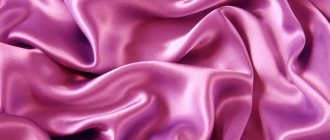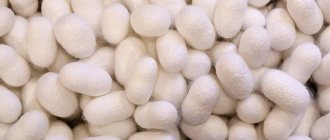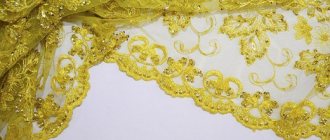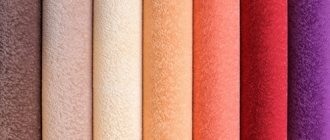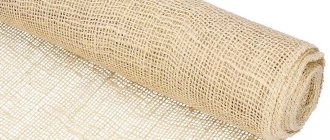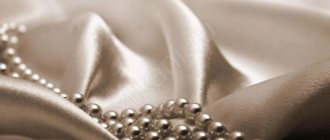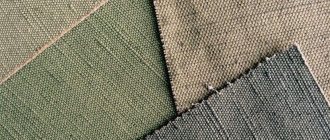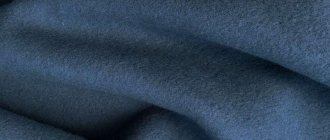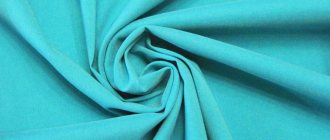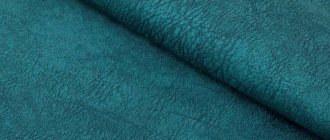DescriptionOrigin
Guipure immediately differs from other fabrics with its airy and delicate appearance due to the elegant combination of fine mesh with intricate lace. The type of lace can be very diverse. The most common options are with a floral or oriental pattern.
Guipure is a thin mesh fabric with convex lace, most often natural or with a small amount of synthetic impurities. This fabric feels soft and pleasant to the touch.
The material can be made from natural, synthetic or mixed fibers. Commonly used cotton, linen, wool, polyester, lycra, viscose and lurex. The threads are woven on special knitting, curtain and knitting machines, using complex leno or openwork weaving.
It is believed that this exquisite canvas first appeared in Ancient Egypt. It came to Europe only in the 16th century, immediately falling in love with local rich ladies who began decorating their outfits with guipure for going out. Initially, the material was made entirely by hand. Many women's dresses of the Renaissance abound in guipure lace with a variety of patterns.
Lace, which is an integral part of this material, can be located throughout the fabric or occupy its upper or lower parts. Thus, products decorated with this decor look very elegant and at the same time gentle, neat and sophisticated.
Advantages and disadvantages
The characteristic features of the fabric, giving it a sophisticated and romantic look, can be attributed to both advantages and disadvantages.
Thin material, which looks very impressive in the finished product, is very difficult to sew and process, and elegant, delicate dresses and skirts require very delicate handling.
Pros:
- spectacular appearance;
- good air exchange;
- ease;
- softness;
- the canvas holds its shape well;
- a variety of guipure fabrics with various laces.
Minuses:
- transparency;
- difficulty in sewing and care;
- tendency to form snags;
- high price.
The color palette of guipure products is usually presented in the most basic shades of white, milky, red, black and gray. Lace is difficult to dye, and the process itself is quite labor-intensive, so there are not too many colors.
Properties
The properties of the fabric are determined by the proportions of the lace and the mesh base. If the ratio of the transparent base to the openwork details is 1 to 9, then the fabric is stiffer and denser. The lower the percentage of lace elements, the softer and more transparent the material.
We can highlight common qualities for all guipure:
- transparency;
- light weight;
- wear resistance;
- allow air to pass through;
- resistance to deformation;
- easy to drape.
The degree of elasticity of the material depends on the amount of stretch or lurex fibers in the base mesh. The more there are, the better the fabric stretches. To give the fabric additional shine, threads of golden or silver color are woven.
With proper care, the fabric retains its best characteristics for a long time. Guipure can be washed by hand or on a gentle cycle without spinning. Iron it at a temperature not exceeding 150 degrees.
Comparison
We should start with the fact that the concept of “lace” is generic. First of all, this is the name of the fabric obtained as a result of weaving or knitting from threads by hand. Magnificent masterpieces are created using special devices. This art originated a long time ago and remains invariably popular to this day. Here is a sample of hand lace making:
Handmade lace
Nowadays, they have learned to produce such creations using a special type of equipment. Machine samples are created similarly to manual ones, but much faster.
In addition, the range of modern lace products includes fabrics of the appropriate type. Some of them are called lace. Others are guipure. This material can be recognized by its transparent mesh with small cells, against the background of which sharply defined fragments of an openwork pattern are placed.
Guipure
What is the difference between guipure and lace, if you compare these fabrics? The fact is that the first type of fabric is often produced using synthetic fibers, which give the finished product certain properties. Firstly, guipure is known as an elastic material. Blouses and dresses made from it tightly fit the body. Of course, it is better to wear tight-fitting models if you have an ideally shaped figure.
Secondly, such fabric may be a little stiff due to the inclusion of lurex in it. At the same time, products made from lace fabric are usually more delicate in terms of the sensations they evoke. This type of fabric does not stretch, which is why it is most often used for sewing loose-fitting clothes.
Let's make a small conclusion about the difference between guipure and lace. Thus, the technology for making guipure is always machine-based. At the same time, the fabric has a special composition and properties. Meanwhile, lace is created not only using special equipment, but also by the hands of craftswomen. It is usually softer to the touch and is thicker than weightless, see-through guipure.
History of origin
The word guipure comes from the French “guipure” and means “airy lace”. Indeed, it is a variety of this material and is a canvas with a convex intertwined end-to-end pattern.
The history of guipure begins in Italy in the 16th century. This country is truly recognized as the birthplace of lace. The first motives were far from modern ones. Initially it was a thin strip with a simple pointed floral pattern. It was used to decorate collars. Gradually, the design became more complex and richer, and a canvas began to form from a narrow strip. Along with floral and geometric patterns, variants with images of humans, animals, and biblical scenes began to be made.
Lace was originally a combination of interlocking embroidery patterns and slit stitching. This is how the wide skirts of ladies were decorated, which made them look even more beautiful and richer.
The first mention of such fabric as “guipure” is associated with Venice. However, it cannot be said that this particular species can be determined by its appearance. The style of Venetian lace was constantly changing. If we take the middle of the 17th century, then it was characterized by voluminous curls, which were decorated with lily flowers and pomegranate fruits. Initially, chamomile and tulip flowers connected with thorns were depicted. These were strict motifs typical of the Renaissance.
The end of the 17th century changed the way people looked at things. Guipure lace has also changed. The patterns have become much smaller. It was called "point de rose". These were small rosettes and cloves (pico), as well as ornate shoots, miniature flowers and leaves.
The cost of the product depended on the material used. For wealthy citizens, masterpieces were created from linen fibers with the addition of gold and silver threads. Bringing the idea to life required a lot of time and effort. Several people could work on one product at once. Italian patterns sewn with a needle and formed by complex weaves were famous far beyond the borders of the state.
However, along with expensive guipure lace, cheap ones were also made. It was based on narrow strips of lace, from which the “frame” was formed. The rest of the space was filled with a mesh made with a needle.
If we talk about the history of guipure in Russia, it is inextricably linked with the Nizhny Novgorod province. The full list of famous “workshops” is as follows:
- Moscow;
- Yaroslavskaya;
- Tverskaya;
- Novgorodskaya;
- Nizhny Novgorod;
- Ryazan;
- Vyatskaya;
- Vologda;
- Kaluzhskaya;
- Tula;
- Kazanskaya;
- Kostroma;
- Petersburg.
Each has its own manufacturing features and characteristic patterns. However, let's focus on the discoverer.
Satin is rightly called the king of silk fabrics. The effect produced by this dazzlingly beautiful fabric with its amazing way of weaving threads can be described in two words: “radiant luxury”.
Read about how to choose the right baby bedding here.
The story begins at the end of the 19th century on the territory of the Nizhny Novgorod province (currently Chkalovsky district). Trees and birds were used as patterns. Their outlines were clear and their figures exquisite. If these are eagles, then the feathers on the wings are well decorated, and the branches and leaves are interestingly arranged on the trees.
The craftswomen paid special attention to the development of gratings. A dozen different variations could be used in one product. They could be of various shapes, form rosettes and be in the form of scales.
Initially, only linen yarn was used. Then silk and fine cotton fibers were added. Lace shawls, parts of women's dresses, and collars were woven, but more often it was measured guipure lace of various designs.
The peak production of the dimensional version was reached in 1945-60.
Application of guipure
Guipure is a universal material that is used alone or in combination with other fabrics to create and decorate wardrobe items. They sew from it:
- casual and evening wear;
- stage costumes for dancers and gymnasts;
- wedding dresses and accessories;
- underwear and sleeping linen;
- gloves.
When making clothes, guipure is combined with satin, silk, knitwear, viscose, denim and even leather. Decorative inserts are made from it or used on top of the main fabric. Guipure lace is used in the decoration of hats, umbrellas, shoes, bags and clutches.
This fabric is also popular in interiors. Guipure looks most appropriate in Provence, shabby chic, retro and country styles. Napkins, tablecloths, curtains and curtains are made from it. It is used to decorate pillows and blankets. This material can also be used to decorate lampshades and floor lamps. It is used as a stencil for applying drawings to walls or interior items.
Guipure is an excellent material for creativity and hand-made work. It is used as the basis or detail of panels and paintings, collages and appliqués. They decorate boxes and storage baskets. Using scraps of this material, you can refresh old worn-out shoes in a fun way. Unusual necklaces and earrings are created from cut out openwork elements and appropriate accessories for jewelry.
General information
Guipure and lace are a through openwork fabric. His design can consist of different elements: images of flowers and leaves, fancy curls, circles and others.
Collars, cuffs and all sorts of original inserts on women's clothing models are often made in this style.
Dresses, blouses and skirts can be entirely guipure or lace, but this requires the use of a non-transparent lining layer. Underwear is often patterned.
We make cake lace from flexible icing at home. Recipe for flexible icing. WE'RE PREPARING A HOUSE
In addition, guipure and lace are used to add decor to the interior. In this way, for example, curtains, tablecloths and pillowcases are decorated.
How to distinguish guipure from lace
Some people consider lace and guipure to be exactly the same fabrics. They make mistakes themselves and mislead others.
Sometimes in magazines there are expressions: “blouse made of lace fabric”, “lace skirt”, “lace dress”.
These descriptions confuse people. It is worth understanding the difference between guipure and lace.
Guipure dress
Both materials are in great demand; they not only have much in common, but also have fundamental differences.
Let's start with the history of the origin of these materials, compare their advantages and disadvantages, find out how they are similar and how they differ from each other.
Lace is often used for finishing products. And guipure is a solid fabric from which not only clothes are sewn, but also curtains and other products.
History of origin
Lace weaving is an art distinguished by its grace and special tenderness. It appeared in France.
Collars and cuffs were decorated with lace.
Not only shawls, but also scarves made from it were in great demand.
In the 16th century, lace with voluminous convex patterns was called guipure.
Some historians claim that crocheted lace appeared in the 15th century (France, Spain, Italy). Up to 17th century in Russia they did not practice this type of art.
And now clothes made from guipure are distinguished by their elegance and beauty. The fabric is light and perfectly breathable.
Sometimes soft, elastic lining fabric is used in guipure outfits, avoiding contact with the skin.
And in our time, guipure has gained popularity. Online stores offer a wide range of this fabric.
Advantages and disadvantages
Guipure does not lose its basic qualities for a long time after numerous washes. It is virtually wrinkle-resistant, although light ironing may be required.
Among the shortcomings, we will name one: if a dense pattern is applied, the fabric turns out to be rough. During wear, puffs may appear on the material.
Therefore, a lining is required when sewing clothes.
The cost of the fabric is quite high.
Lace is created using artistic interweaving of threads that form an exquisite pattern. Lace elements are used in the decoration of a variety of things, giving the finished product complete elegance.
There are different varieties of lace, differing in the shape of the weave and the principle of production:
The main disadvantage of lace is that it is easy to tear if it gets caught. And if it doesn’t break when hooked, then perhaps over time the threads in that place will weaken, and it will gradually begin to unravel thread by thread.
What is the difference between lace and guipure?
Now, you can answer this question yourself. Indeed, technically and historically related trends in these decorative products are similar, but the differences cannot be ignored.
Guipure is a fabric from which you can create a ready-to-use product.
Lace is just a finishing element. It is impractical to sew something entirely from lace ribbons, although it is possible and applicable in practice.
Doubts are dispelled. Now you will be sure that you are purchasing guipure.
The online store has a wide range of different materials.
Interesting site materials
Successful flower magic and see you again at VortexFlowers.net
Feel free to say “thank you” to your florist in the comments and show your gratitude by clicking on the social media buttons! Come back often!
How is guipure different from lace?
Guipure is a lace fabric. Despite the fact that it is one of the varieties of lace, they are two different materials.
They are often confused with each other, because in appearance they are very similar. However, there are significant differences between them, from the composition to the production method. Information about the differences between these materials is presented in the table:
| Differences | Types of openwork fabrics | |
| Guipure | Lace | |
| Compound | Blended, with the addition of synthetic fibers | Threads of natural origin of one type |
| Production Features | Availability of mesh base | No woven base |
| Manufacturing methods | Machine | Machine, manual |
| Hardness degree | High | Low |
| Stretch Rate | ||
| Structure | Thin | Fat |
Production Features
Guipure is made in several ways.
- The classic method is “pulling”. The basis for the pattern is the mesh. Its size is from 0.5 to 0.8 cm. It is applied to the fabric and its position is noted. Then the warp and weft threads for “pulling” are determined. After all excess fibers are removed from the fabric, it has a loose appearance. In order to give it rigidity, the threads are twisted.
- Another method is based on the “etching” method. To do this, soluble fabric is used as a basis. A drawing is applied to it. Usually synthetic fabric (for example, vinyl) is used. Embroidery is done with cotton yarn. Then the resulting canvas is placed in boiling water for 20 minutes.
- Currently, spinning machines are used to produce fabric on an industrial scale. They perform the pattern according to a predetermined scenario. For production, both natural fabrics are used (in this case, the result is rigid, dense lace with a pronounced pattern) and synthetic ones (the result is a thin linen-type fabric).
The following threads are used for manufacturing:
- Cotton;
- Linen;
- Silk;
- Synthetic.
Guipure: a noble, elegant fabric for sophisticated natures
Narrated by: Alena Vinogradova
natural, animal or plant origin, sometimes with the addition of artificial or synthetic
dress, blouse, linen, curtain
Water resistance Hygroscopicity Capillarity Air permeability Vapor permeability Electricity Mercerization of fabrics
| low |
| 6-12% |
| highest rate of moisture absorption |
| high |
| high |
| moderate |
| processed if necessary |
Fabric structure Method of spinning threads Side Drawing Manufacturers GOST Types
| complex weave |
| leno (lace) |
| double-face weave |
| plain, plain dyed, printed |
| Korea, China |
| 21746-92, 30157.0-95, TU 8156-012-48504721-2002 |
| classic, knitted, with lurex, stretch guipure |
Guipure immediately differs from other fabrics with its airy and delicate appearance due to the elegant combination of fine mesh with intricate lace. The type of lace can be very diverse.
The most common options are with a floral or oriental pattern.
Guipure is a thin mesh fabric with convex lace, most often natural or with a small amount of synthetic impurities. This fabric feels soft and pleasant to the touch.
The material can be made from natural, synthetic or mixed fibers. Commonly used cotton, linen, wool, polyester, lycra, viscose and lurex.
The threads are woven on special knitting, curtain and knitting machines, using complex leno or openwork weaving.
It is believed that this exquisite canvas first appeared in Ancient Egypt. It came to Europe only in the 16th century, immediately falling in love with local rich ladies who began decorating their outfits with guipure for going out.
Initially, the material was made entirely by hand. Many women's dresses of the Renaissance abound in guipure lace with a variety of patterns.
Lace, which is an integral part of this material, can be located throughout the fabric or occupy its upper or lower parts. Thus, products decorated with this decor look very elegant and at the same time gentle, neat and sophisticated.
Results
So, dresses, blouses, accessories and even tracksuits (guipure) mostly receive very good reviews. This fabric has been famous since the end of the 16th century. As a result, the material has become one of the most popular for sewing a variety of products. The fabric is very thin, see-through, fashionistas say. Although it is a little harsh to the touch, it looks quite elegant and gentle. Guipure consists of various convex patterns (most often of flowers), connected to each other by mesh knitting. This material looks very similar to lace. It looks perfect in all kinds of products.
